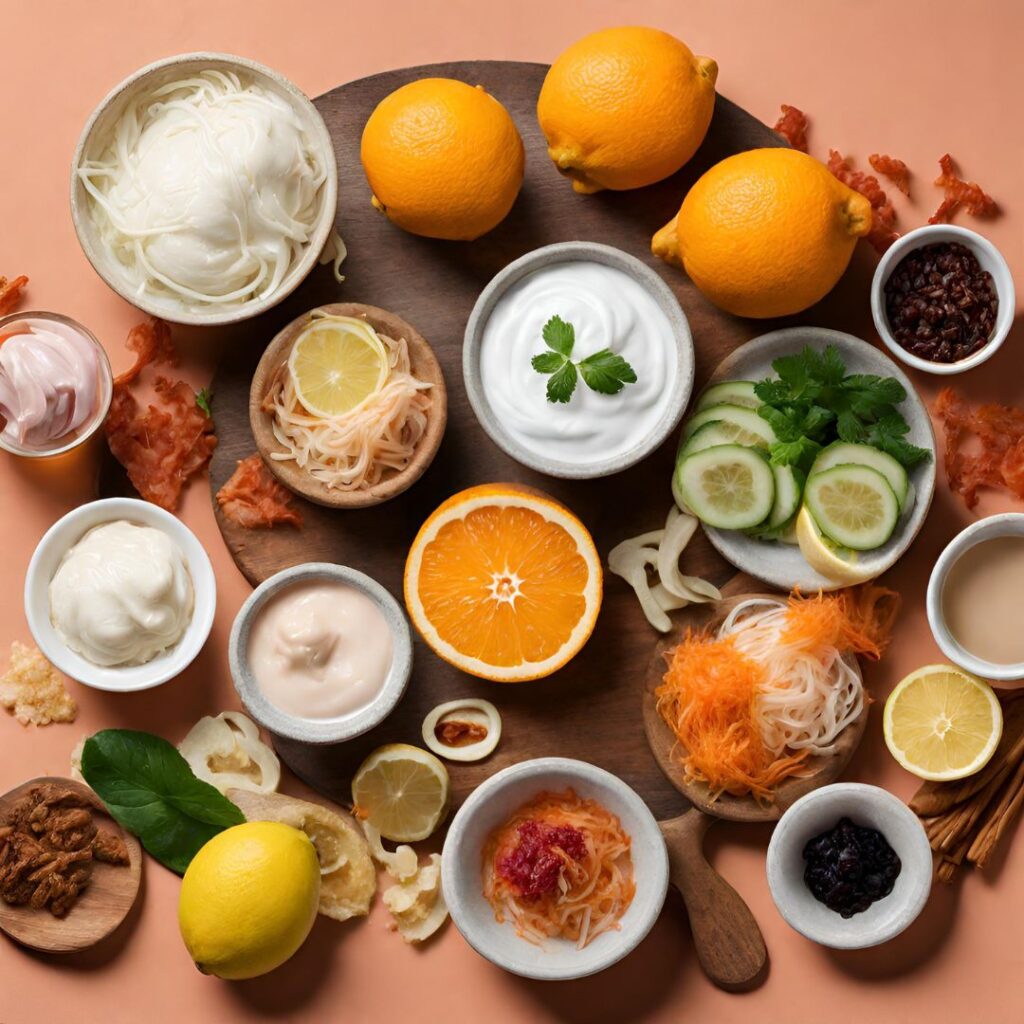In the vast universe of culinary delights, there exists a category of flavors that tickles our taste buds in a unique way—sourness. From zesty lemons to tart yogurt, sour foods add a refreshing punch to our palate. But beyond just tantalizing our taste buds, emerging research suggests that sour foods may possess a hidden power: aiding in wound healing. In this exploration, we delve into the intriguing relationship between sour foods and the body’s natural ability to heal wounds.
The Healing Power of Sourness:
Sour foods owe their tangy taste to acids like citric acid in lemons and acetic acid in vinegar. These compounds exhibit antimicrobial properties, crucial for combating pathogens that can impede wound healing. According to “Sabiston Textbook of Surgery,” 20th edition, these antimicrobial actions can help mitigate the risk of wound infections, a common complication in surgical settings. Furthermore, sour foods are rich in vitamin C, a vital nutrient for collagen synthesis. As outlined in “Schwartz’s Principles of Surgery,” 12th edition, collagen plays a pivotal role in tissue repair and wound closure. Vitamin C, found abundantly in citrus fruits, enhances collagen formation, thereby promoting efficient wound healing.
Traditional Wisdom, Misconceptions, and Modern Validation:
For centuries, healing practices worldwide have acknowledged the therapeutic potential of sour foods. However, it’s worth noting that in some parts of India, there exists a misconception that consuming sour foods can delay healing. Despite this belief, modern surgical literature, such as “Current Diagnosis and Treatment: Surgery,” 15th edition, corroborates traditional wisdom with scientific evidence. Studies cited in these reputable sources demonstrate the antimicrobial efficacy of acidic compounds against wound pathogens, validating their role in wound care. Moreover, clinical trials highlighted in “Greenfield’s Surgery: Scientific Principles & Practice,” 6th edition, emphasize the importance of vitamin C in wound healing. The antioxidant properties of vitamin C help mitigate oxidative stress, fostering an environment conducive to optimal wound repair. Despite misconceptions in certain communities, the scientific evidence overwhelmingly supports the beneficial role of sour foods in wound healing, providing a bridge between traditional knowledge and modern medical practices.
Sour Foods as Allies in Wound Care:
Incorporating sour foods into one’s diet can offer a flavorful approach to supporting the body’s healing processes, especially in the context of wound care. Here are some sour foods that may benefit wound healing:
- Citrus Fruits: Lemons, oranges, grapefruits, and limes are rich sources of vitamin C and citric acid, making them excellent additions to a wound-healing diet.
- Vinegar: Whether apple cider vinegar or balsamic vinegar, these acidic liquids can be used in dressings, marinades, or consumed diluted in water to reap their potential healing benefits.
- Yogurt: Fermented dairy products like yogurt contain lactic acid, which not only lends a tangy flavor but also supports gut health, indirectly influencing overall immunity and wound healing.
- Kimchi and Sauerkraut: These fermented vegetables are packed with beneficial bacteria and organic acids that contribute to a healthy gut microbiome, which in turn plays a crucial role in immune function and tissue repair.
- Pickled Vegetables: Pickling vegetables in acidic brines not only preserves them but also enhances their flavor profile and potential health benefits.
- Tamarind: Tamarind, with its tangy flavor and rich antioxidant content, has been traditionally used in various cultures for its medicinal properties. While more research is needed to elucidate its direct effects on wound healing, incorporating tamarind into the diet alongside other sour foods may provide additional therapeutic support for those undergoing the healing process.
Incorporating Sour Foods into Wound Care:
The inclusion of sour foods in post-operative diets can offer a palatable approach to supporting wound healing. “Bailey & Love’s Short Practice of Surgery,” 27th edition, advocates for a holistic approach to wound care, encompassing nutritional support alongside standard medical interventions. Sour foods, such as yogurt and pickled vegetables, provide not only flavour but also essential nutrients and beneficial acids conducive to wound healing.
Conclusion:
In conclusion, recent studies and reputable surgical literature underscore the therapeutic potential of sour foods in wound healing. From their antimicrobial properties to their role in collagen synthesis, sour foods offer a multifaceted approach to supporting the body’s innate healing mechanisms. Integrating these foods into post-operative diets, as advocated by surgical references, can contribute to improved patient outcomes and enhanced recovery. As we continue to unravel the complexities of wound care, embracing the tangy allure of sour foods may prove to be a flavorful pathway to accelerated healing and optimal surgical outcomes. It’s important to note that while sour foods can be beneficial for wound healing, there is no evidence to suggest that avoiding them would enhance the healing process. Therefore, including sour foods in moderation as part of a balanced diet can be a delicious and potentially advantageous strategy for supporting overall health and recovery. Additionally, regardless of whether the food is sour or not, it should be fresh, nutritious, and prepared in a hygienic way to maximize its benefits and minimize the risk of complications. Furthermore, the inclusion of specific sour foods like tamarind may also offer unique benefits in wound healing. Tamarind, with its tangy flavor and rich antioxidant content, has been traditionally used in various cultures for its medicinal properties. While more research is needed to elucidate its direct effects on wound healing, incorporating tamarind into the diet alongside other sour foods may provide additional therapeutic support for those undergoing the healing process.
References:
- Sabiston Textbook of Surgery, 20th edition
- Schwartz’s Principles of Surgery, 12th edition
- Current Diagnosis and Treatment: Surgery, 15th edition
- Greenfield’s Surgery: Scientific Principles & Practice, 6th edition
- Bailey & Love’s Short Practice of Surgery, 27th edition
(Disclaimer: The views expressed in this article are solely those of the author and not necessarily endorsed by Malioon.)





This Post Has One Comment
Quality articles is the important to invite the viewers to pay a quickvisit the web site, that’s what this web page is providing